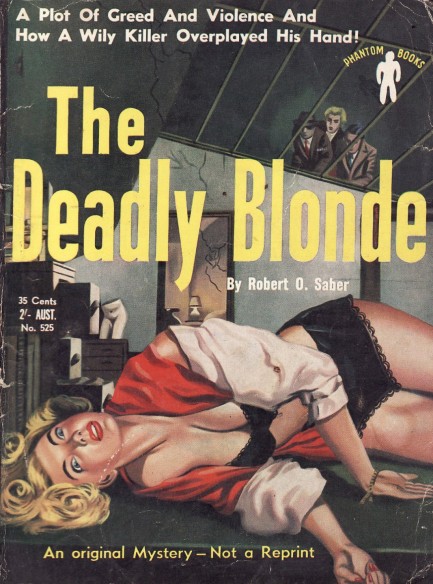| Vintage Pulp | Mar 7 2024 |

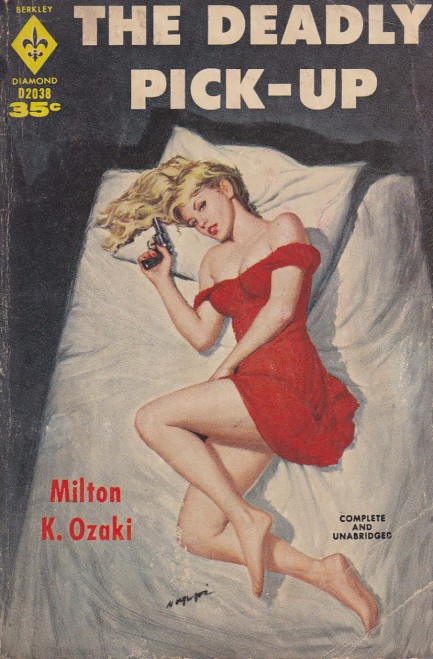
Above: an alternate cover for Milton K. Ozaki's 1952 thriller The Deadly Pick-Up. We use “thriller” loosely, because it wasn't a very involving book. But both covers are excellent. This one is by Rudy Nappi. You can see the other, by an uncredited artist, here.
| Vintage Pulp | Jun 26 2023 |

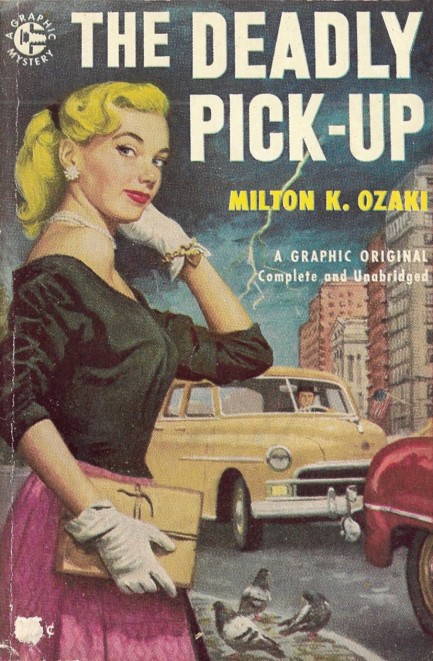
The last Milton K. Ozaki book we read left us cold, but because 1952's Deadly Pick-Up has beautiful cover art we decided to give it a shot. Graphic Books during the early 1950s routinely had brilliant covers. About a paragraph into reading this we realized it was the same Ozaki as before, but we forged ahead into the tale of a man wrongfully suspected of a woman's strangulation, who must solve the crime before he's snared by the cops. The dead woman's sister, a private detective, helps him out, and they discover the reason for the killing was $60,000 in counterfeit bills, which turn out not to be fake after all.
Crime writing and hard boiled similes go hand-in-hand, but you have to do better than that. Ozaki does manage to create a few unusual moments, including steering the investigation into a gay bar—where the hero is physically attacked twenty-against-one when he's assumed to be a morals spy. The gay characters in the book do not—obviously—fare well descriptively. That's never fun to read, but it's what you have to expect considering the time period. Ozaki would not have earned our future trust regardless. He just doesn't write well. But we're glad to have the book because the cover—uncredited, sadly—is aces.
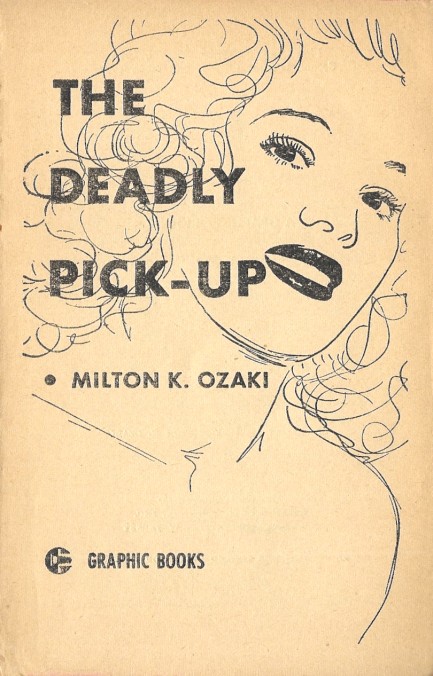
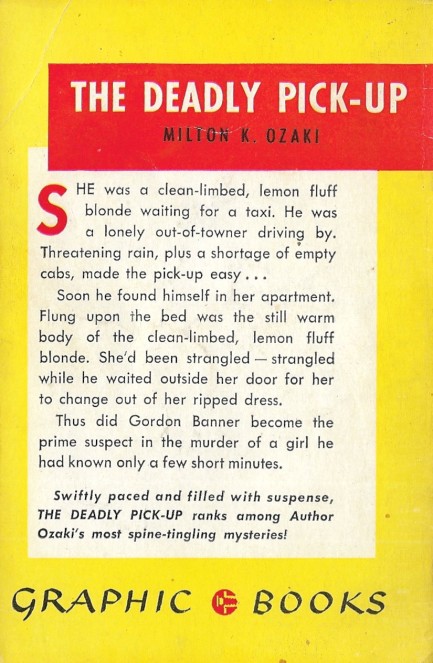
| Vintage Pulp | Jul 28 2021 |

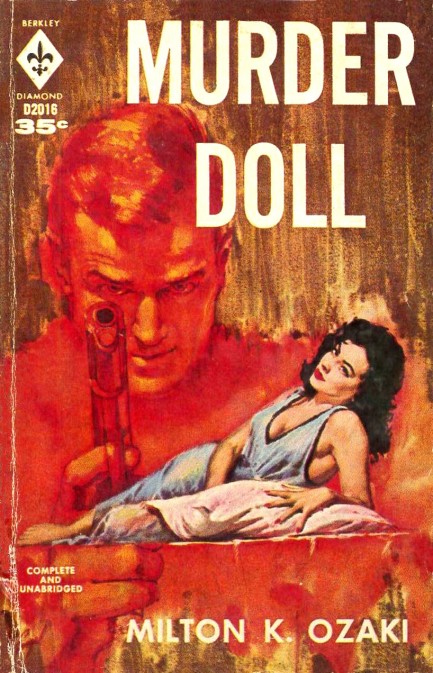
| Vintage Pulp | Oct 7 2016 |

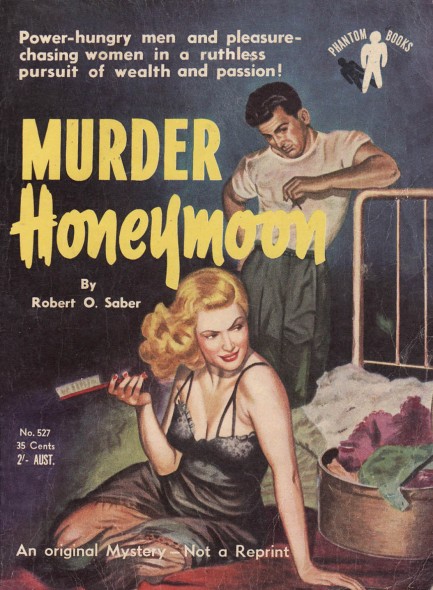
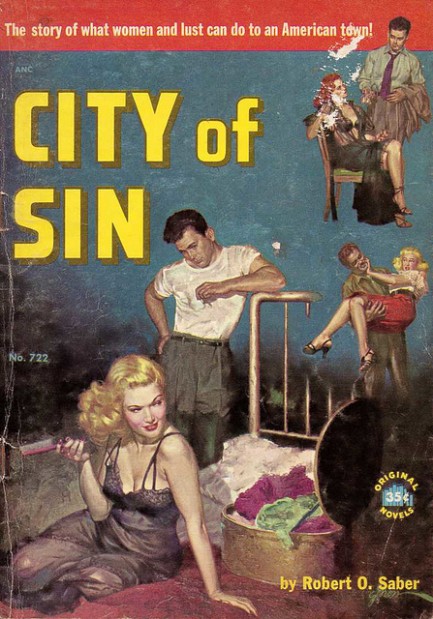 Above, great cover art for Robert O. Saber's Murder Honeymoon, a digest style paperback from the Australian imprint Phantom Books, 1953. The art originally fronted Saber's 1952 Original Novels thriller City of Sin, which you see at right, and was painted by the always amazing George Gross. Saber was aka Milton K. Ozaki, and we've featured him quite a bit because he seems to have always managed to have his books illustrated by the best. Though the art on these two books was basically the same, the novels were different. This is the first time we've come across identical art for separate novels by the same author.
Above, great cover art for Robert O. Saber's Murder Honeymoon, a digest style paperback from the Australian imprint Phantom Books, 1953. The art originally fronted Saber's 1952 Original Novels thriller City of Sin, which you see at right, and was painted by the always amazing George Gross. Saber was aka Milton K. Ozaki, and we've featured him quite a bit because he seems to have always managed to have his books illustrated by the best. Though the art on these two books was basically the same, the novels were different. This is the first time we've come across identical art for separate novels by the same author.
| Vintage Pulp | Oct 2 2016 |

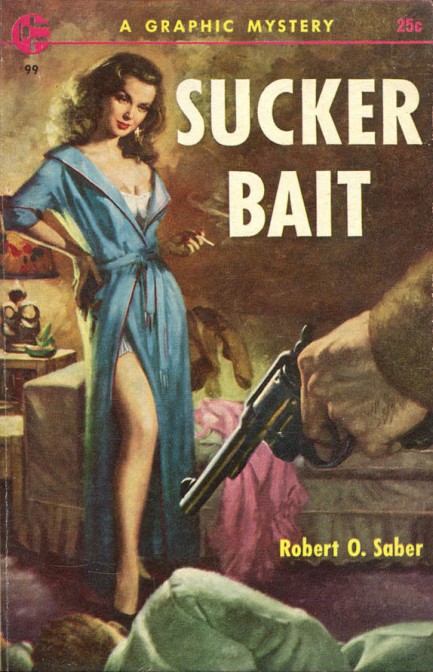
Above, the cover of Sucker Bait by Robert O. Saber, aka Milton K. Ozaki, 1955 from Graphic Books. Rich men pay $1,000 for entry into the Purple Door Club, where they procure the services of Chicago's most beautiful prostitutes, but also become targets for blackmailers. Hero Carl Good is accused of murdering one of the women and has to clear himself by finding the real killer. Good thing he's a detective. The cool cover art here is by Robert Maguire.
| Vintage Pulp | Sep 14 2016 |

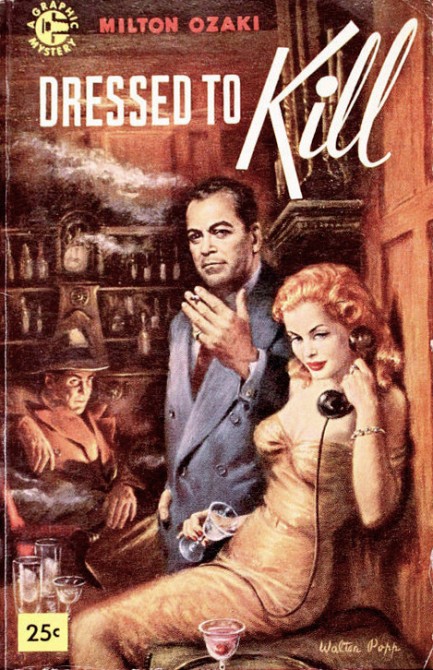
| Vintage Pulp | Jan 5 2016 |

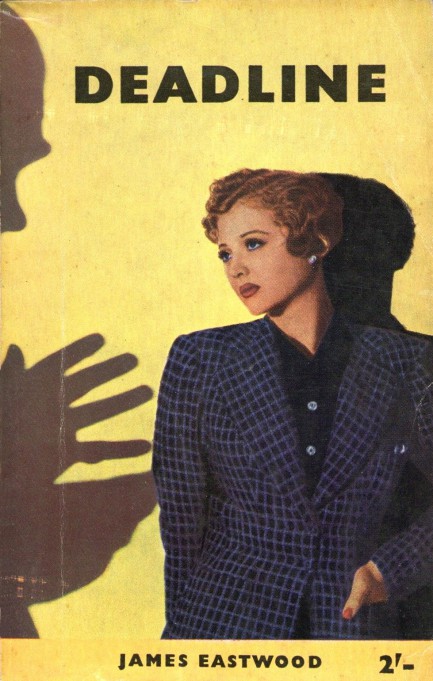
Above and below are assorted covers featuring yet another fun mid-century paperback art motif—the looming or threatening shadow. The covers are by the usual suspects—Rader, Phillips, Gross, Caroselli, Nik, as well as by artists whose work you see less often, such as Tony Carter’s brilliant cover for And Turned to Clay. That's actually a dust jacket, rather than a paperback front, but we couldn't leave it out. You’ll also notice French publishers really liked this theme. We’ll doubtless come across more, and as we do we’ll add to the collection. This is true of all our cover collections. For instance, our post featuring the Eiffel Tower has grown from fifteen to twenty-two examples, and our group of fronts with syringes has swelled from thirteen to twenty-six images. We have twenty-four twenty-six—see what we mean?—more shadow covers below, and thanks to all original uploaders.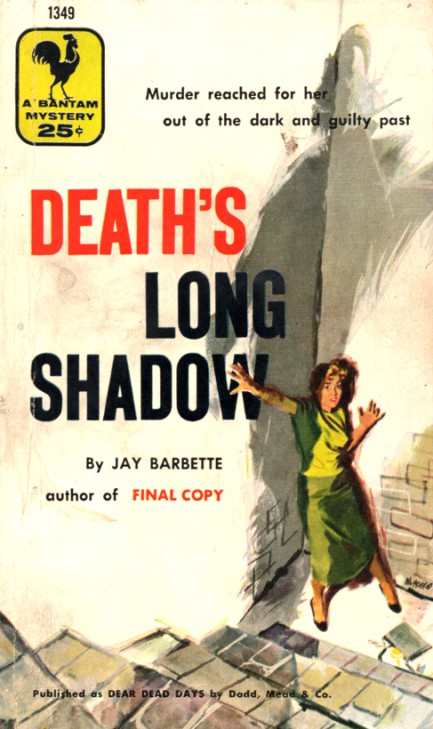
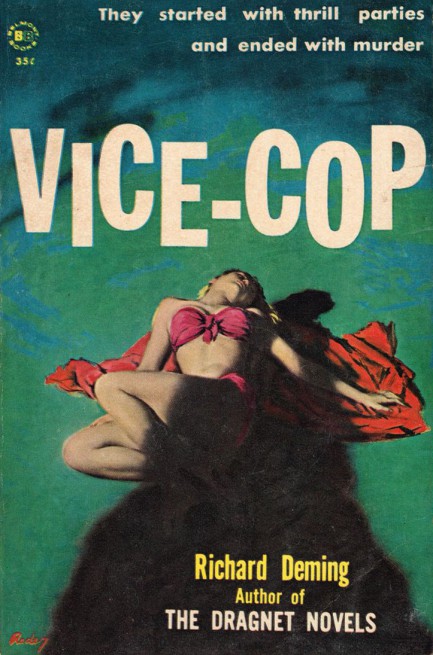
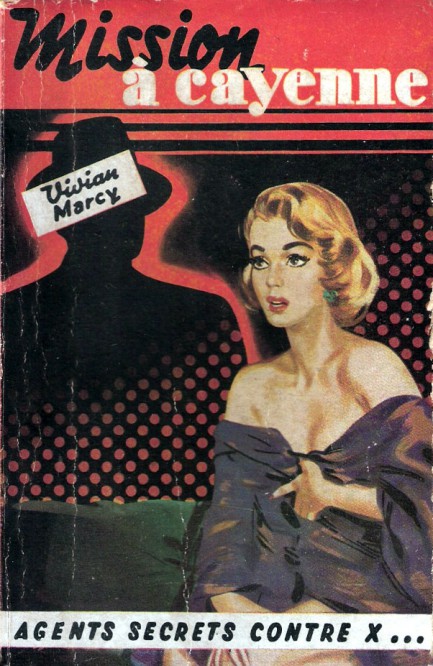
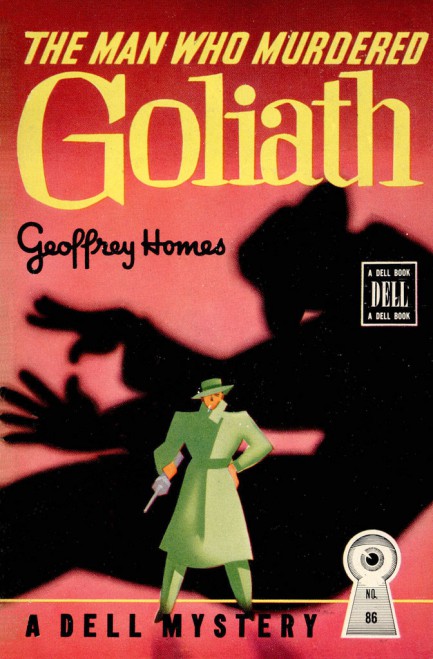
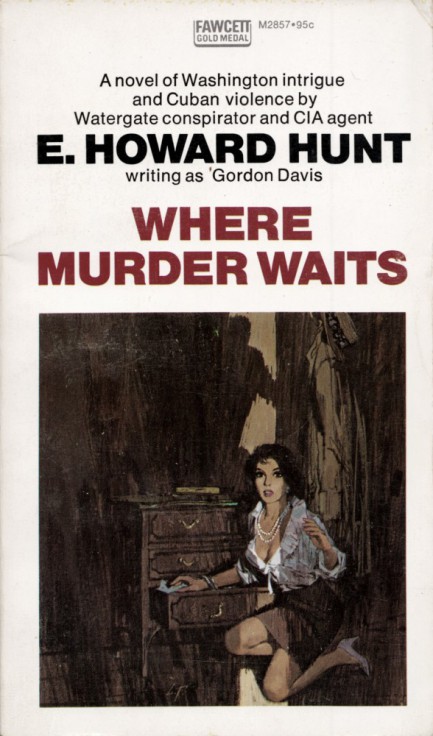
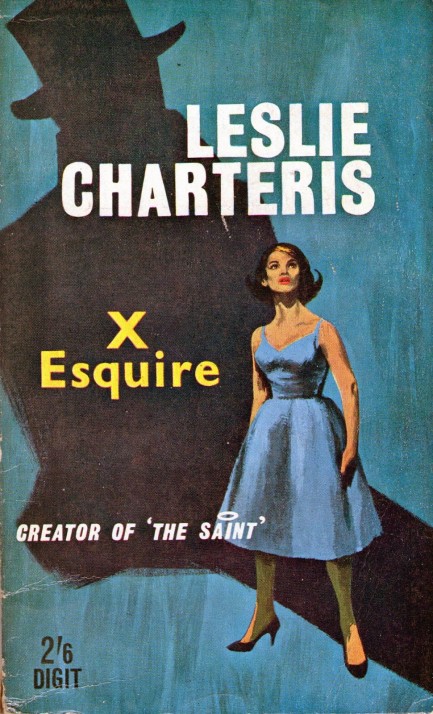
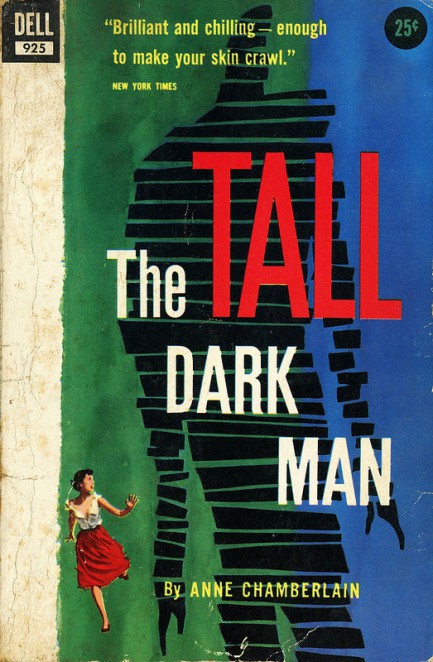
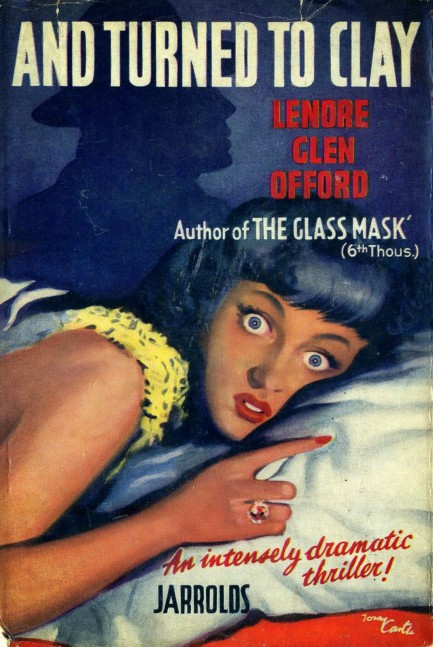
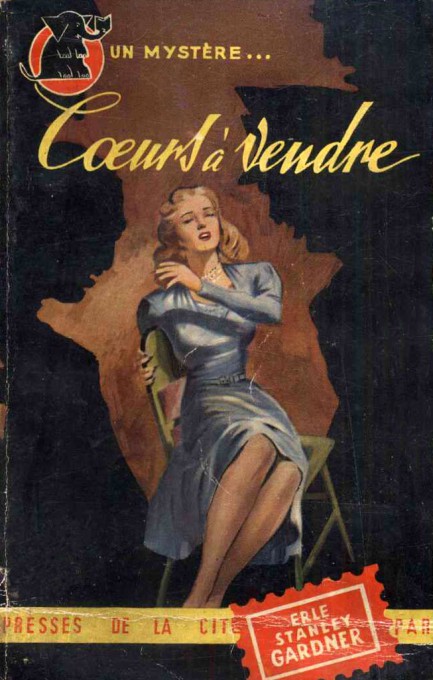
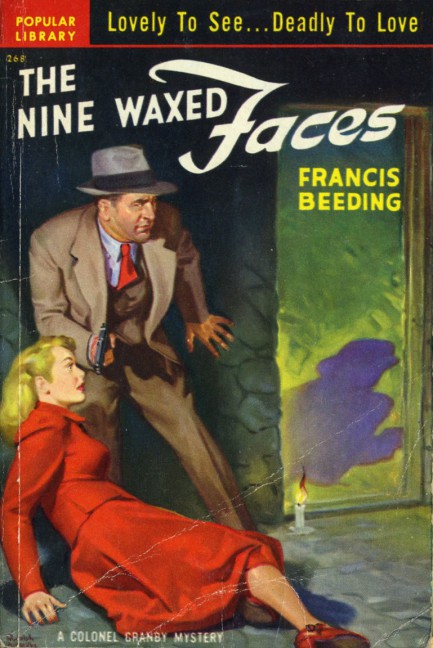
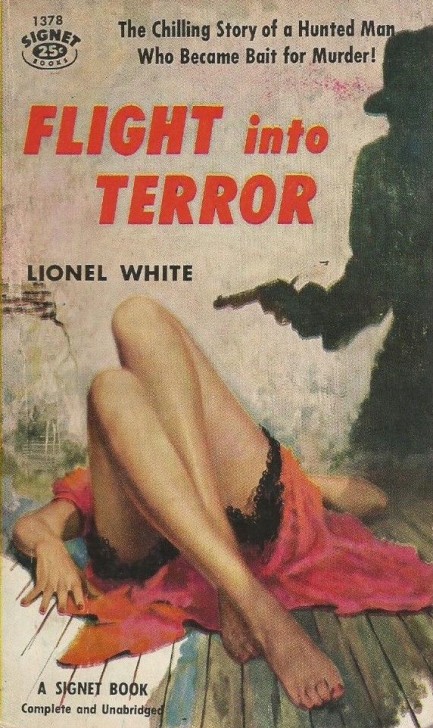
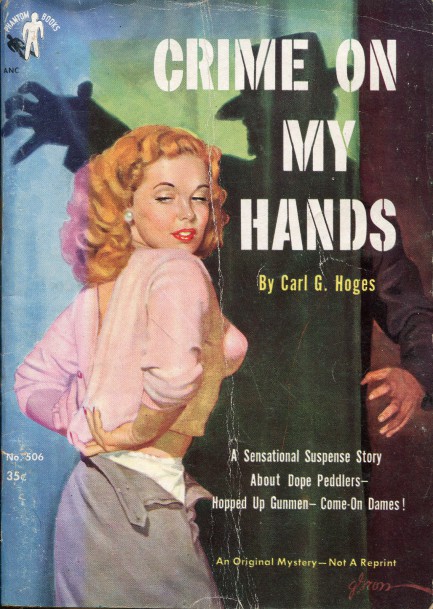
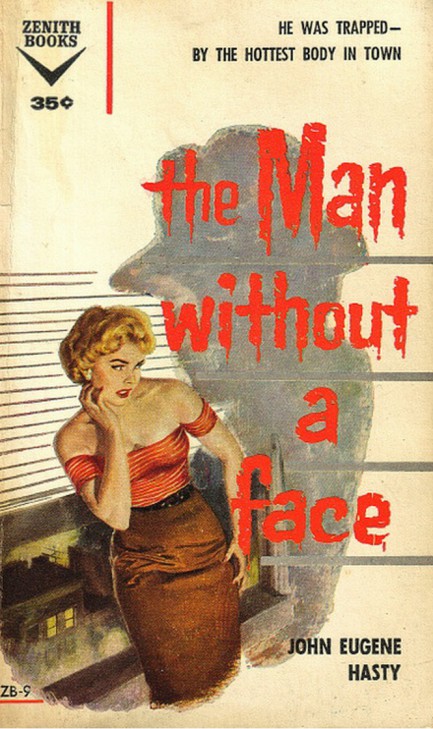
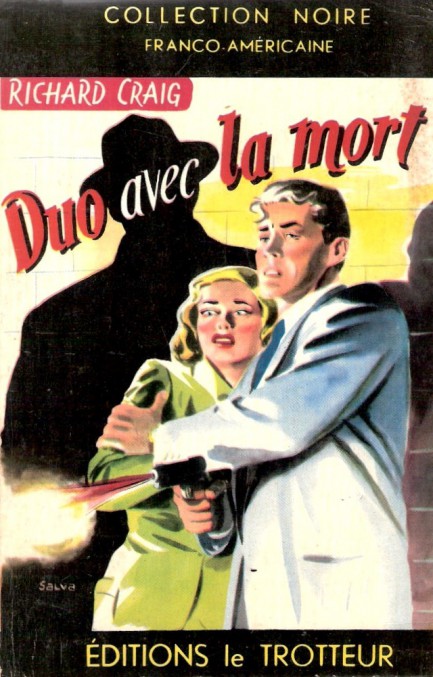
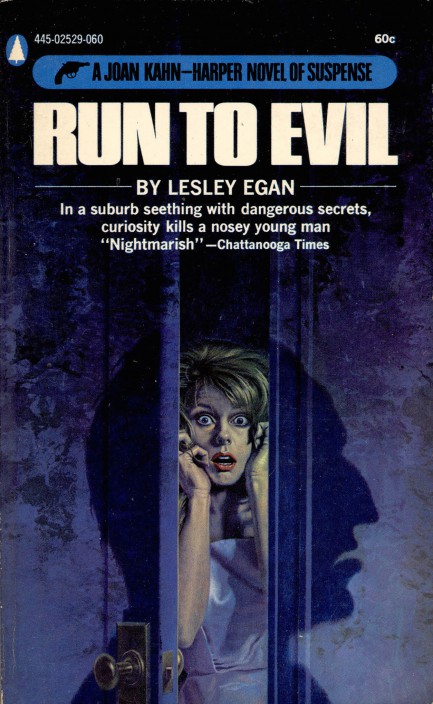
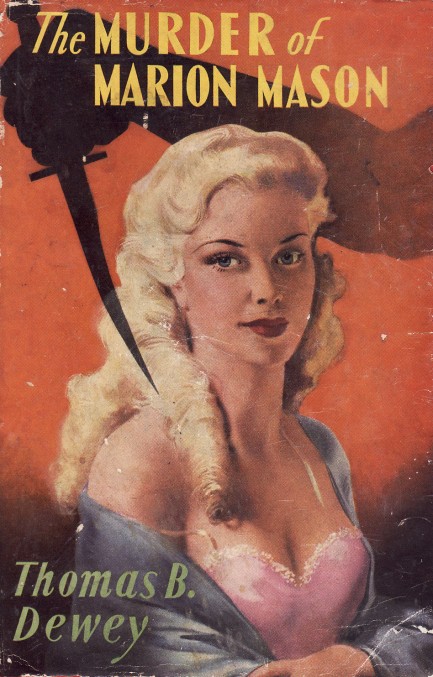
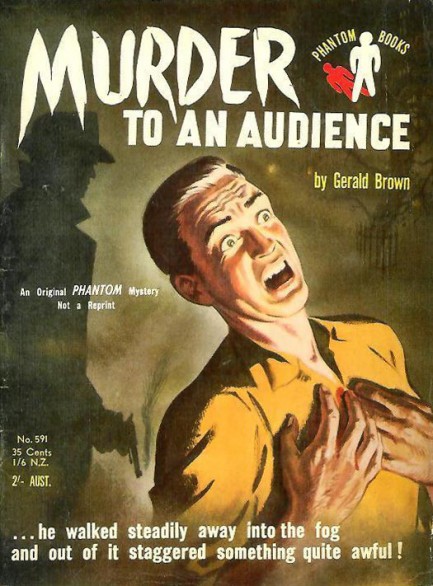
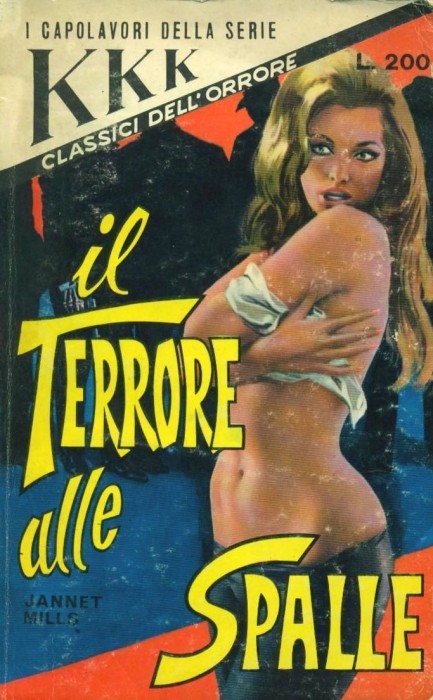
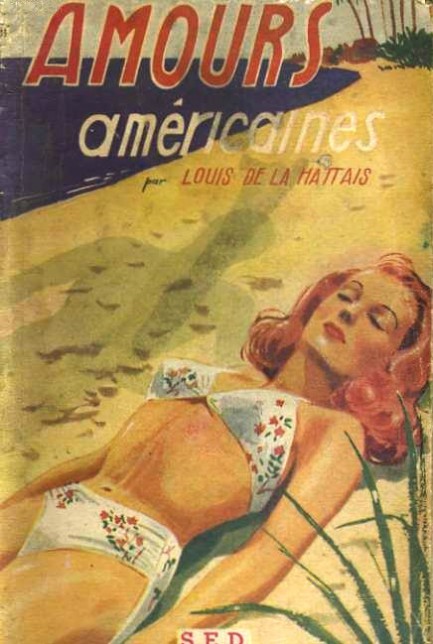
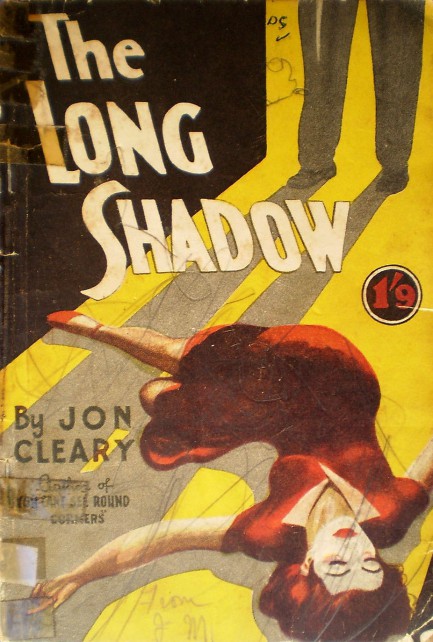
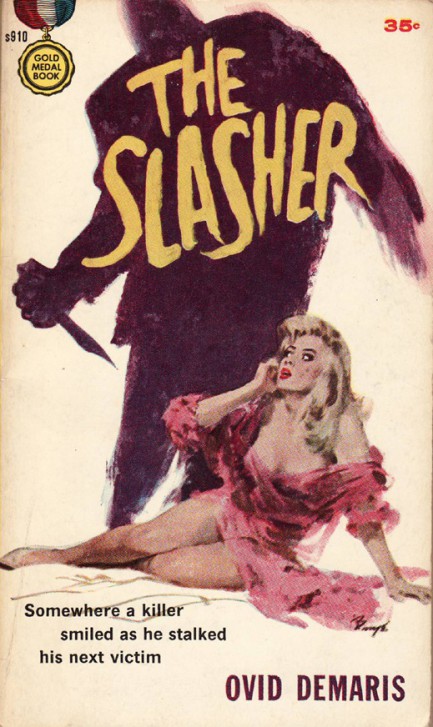
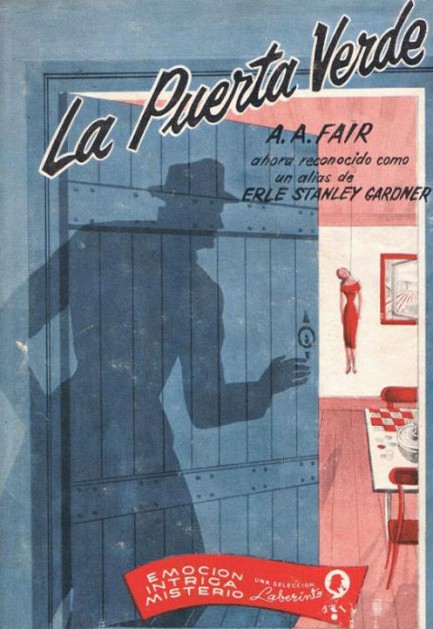
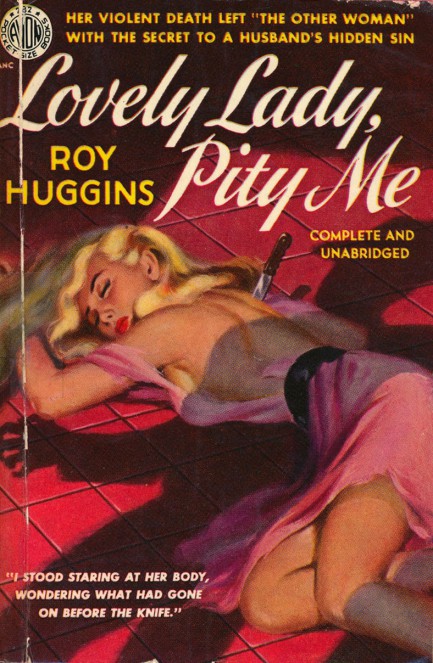
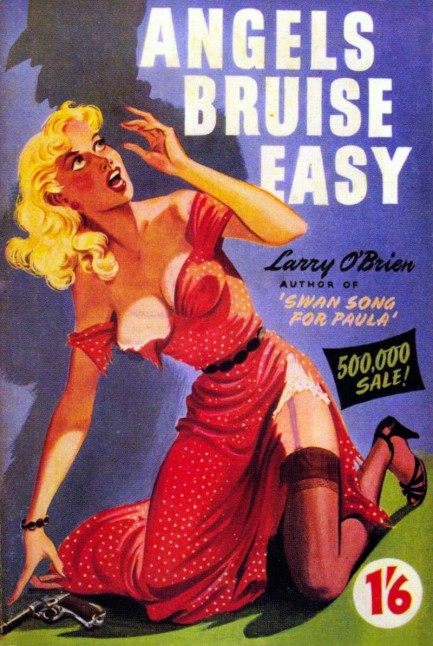
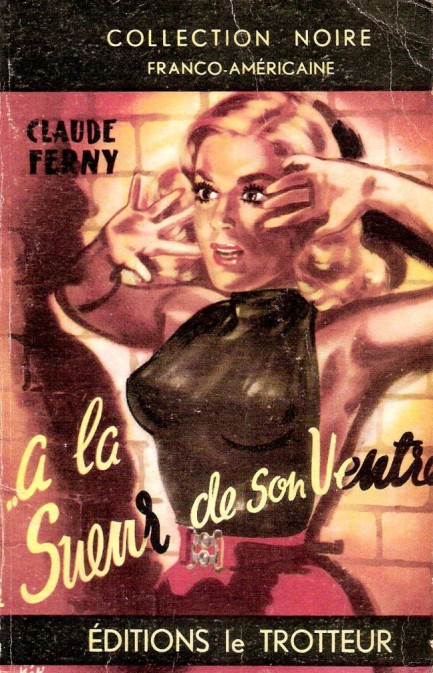
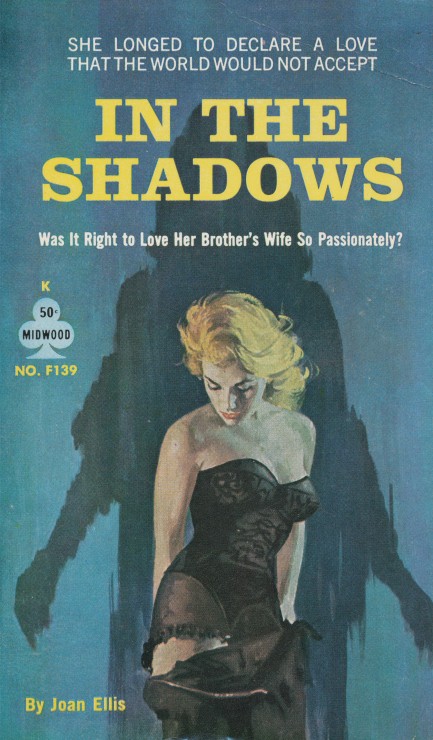
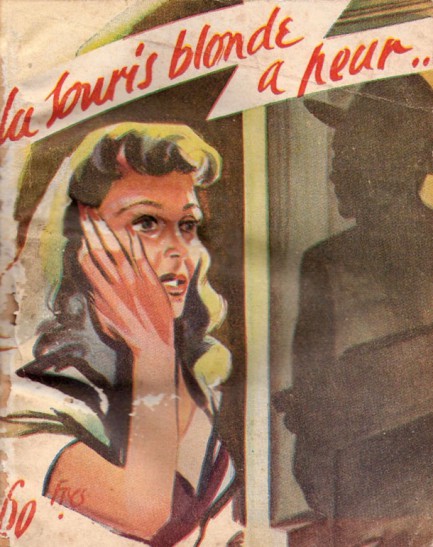
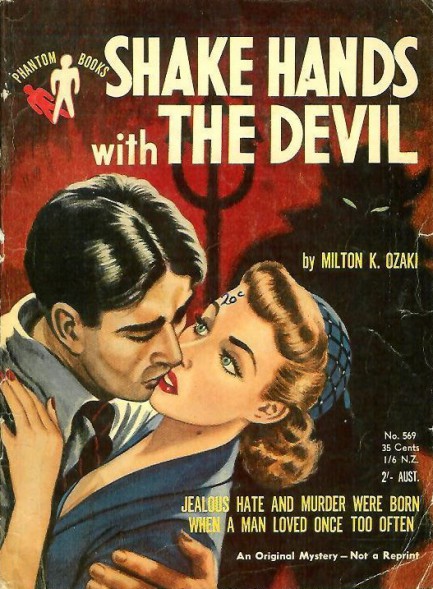
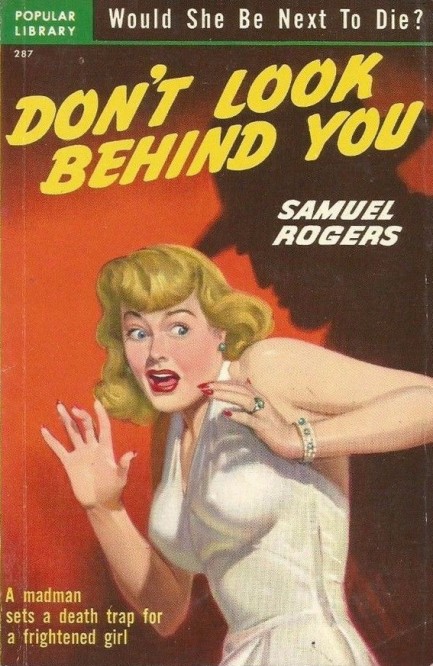
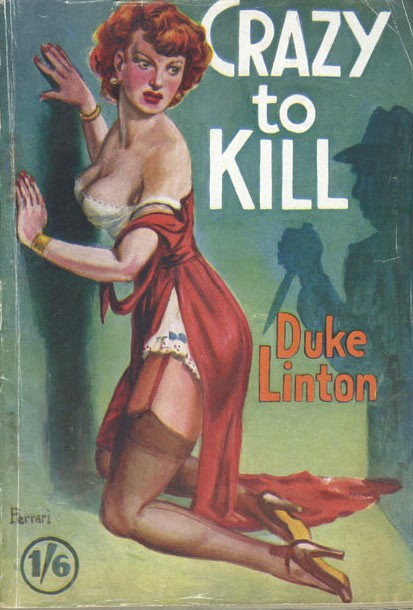
| Vintage Pulp | Jan 15 2015 |


| Vintage Pulp | Sep 7 2014 |

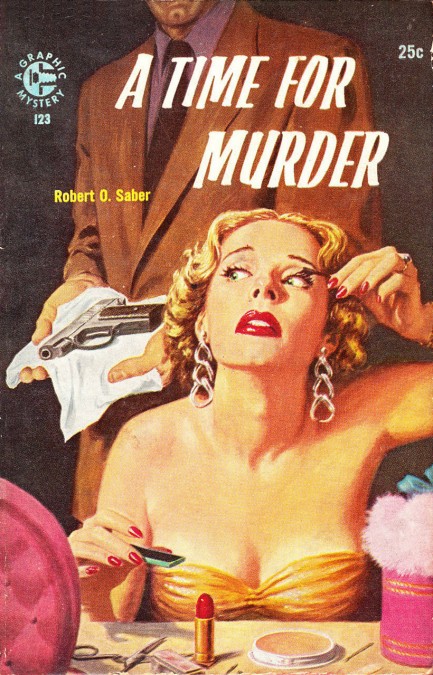
Above, the cover for Robert O. Saber’s, aka Milton K. Ozaki’s Chicago-based tale of crooked cops and robbers A Time for Murder, 1956. The artist here is Walter Popp.
| Vintage Pulp | May 18 2014 |

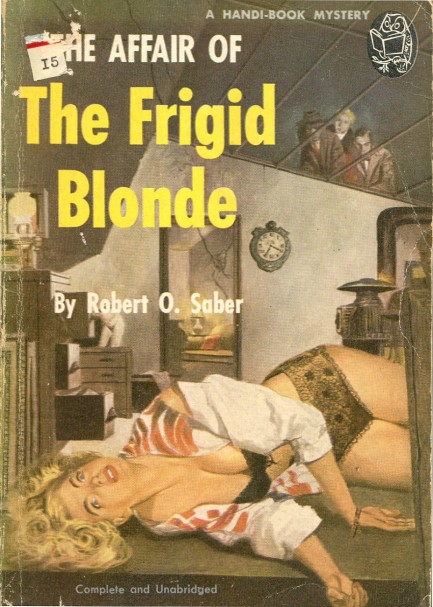
Remember our set of paperback covers featuring women who had died with their eyes agape? Here’s another to add to the list, which we saw over at Bill Crider’s blog. It’s Robert O. Saber’s The Affair of the Frigid Blonde, published in 1950 by the Handi-Books imprint of Quinn Publishing Company, Inc. This one is a bit strange, though, because of the three men seemingly hovering in mid-air to get a look through the deceased’s skylight. We chalk the bizarre perspective up to artistic license, or maybe we’re just not seeing it right. In fact, maybe she’s not even dead. Maybe she’s just in a state of shock. If we saw three guys floating above our skylight we’d fall into a stupor too. But no, the synopsis makes clear she’s dead.
Anyway, Robert Saber was a pseudonym used by Milton K. Ozaki, who also published frequently under his own name. The book also appeared in Australia as The Deadly Blonde in 1953, published by the Australian imprint Phantom Books, with slightly altered art. Among other details, what looks like a robot but is probably supposed to be a lamp was removed from the background, a clock disappeared, a humanoid shadow at the far right edge vanished, and the woman’s undies were made less sheer (though the floating guys still get a pretty interesting angle). All in all, this is very instructive example of how cover art changes between editions of pulp paperbacks. We’ll dig up more examples later. 